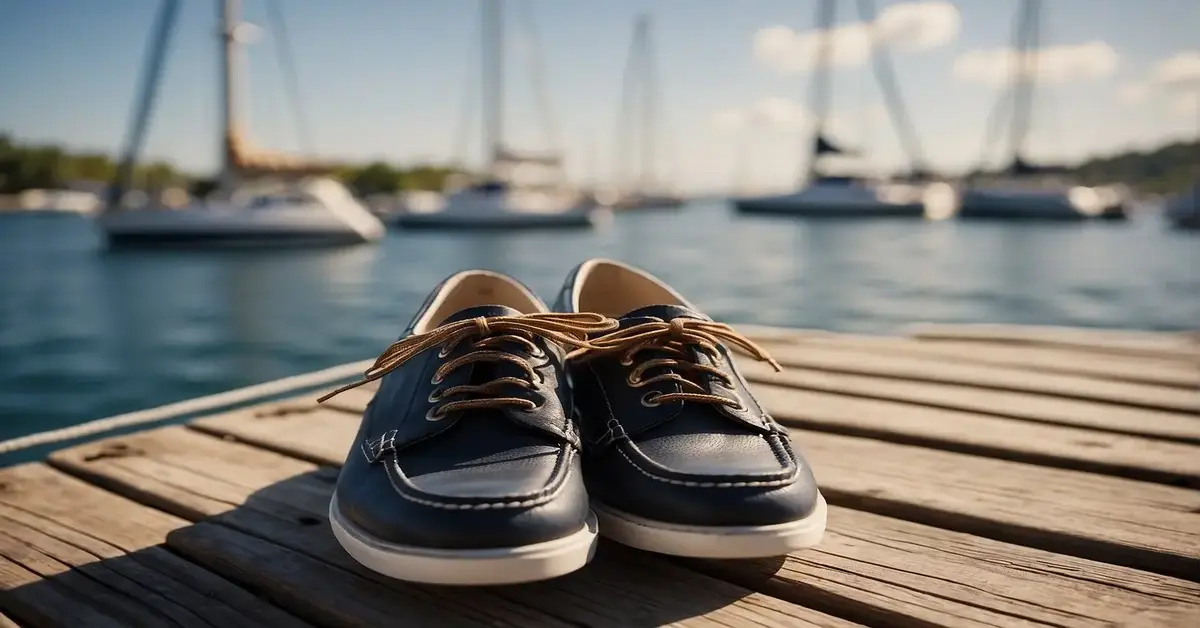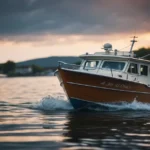Discovering the best footwear for sailing is vital to enhancing your nautical adventures in 2025. The right pair of shoes is not a mere accessory; it’s a pivotal gear choice that impacts comfort, safety, and agility on the water. Whether navigating a leisurely day sail or engaged in competitive racing, the ideal sailing shoes will provide excellent traction, shield your feet, and facilitate nimble movements aboard your vessel.
Embark confidently on your next maritime journey, knowing you’ve chosen the best footwear to keep you steady and secure at sea. I’ve found the top picks of Footwear for Sailing to ensure you sail with the best.
The Best Footwear for Sailing – The Best 5 Tips for You
When I’m getting ready to set sail, selecting the proper footwear for sailing is crucial for safety and comfort. Here are my top 5 tips for choosing the best Footwear for Sailing.
1. Opt for Non-Marking Soles:
Scuffs and marks can mar the deck; wear shoes with non-marking rubber soles to keep it pristine.
2. Traction is Key:
Slippery decks are a reality at sea. Shoes with excellent grip help prevent accidents.
3. Quick-Drying Materials:
Feet will get wet, whether from waves or weather. Shoes made from quick-drying materials like canvas or water-resistant textiles are ideal.
4. Comfort Matters:
You could be on your feet for hours. Look for shoes with adequate support, such as those with ergonomic midsoles.
5. Choose Durability:
Marine environments are harsh. Durable construction, like hand-sewn stitches, will ensure longevity.
- Non-Marking Soles: Prevent deck scuffs
- Traction: Anti-slip features for safety
- Quick-Drying: To keep feet dry and comfortable
- Comfort: Supportive and cushioned insoles
- Durability: Sturdy construction for lasting use
By following these tips, I’ve always found sailing to be a more enjoyable experience knowing that my feet are well-cared for. Choosing proper footwear can make all the difference whether you’re a competitive sailor or enjoy casual weekends on the water.
Choosing the Right Sailing Footwear

When I set sail, I make sure my footwear for sailing is as ready for the sea as I am. The right pair doesn’t just keep my feet safe; it can enhance my whole sailing experience. Here’s how I choose the best sailing shoes, focusing on materials, comfort, and performance.
Materials and Durability
The materials of sailing shoes must withstand saltwater and weather for durability. I prefer waterproof materials like full-grain leather or synthetic materials known for their longevity. Mesh or quick-drying materials are also top choices for lighter shoes that can handle getting wet. Some sailors opt for natural materials that offer a classic look while providing good protection.
Comfort and Fit
Nothing ruins a day on the deck faster than uncomfortable shoes. I chart a course for comfort, ensuring the sailing shoes I select come in my size and offer a removable insole for custom cushioning. Non-marking soles and breathability are crucial too. I also look for a snug fit to prevent blisters, without compromising on support for those long stretches at sea.
Style and Design
While performance is my mainstay, I don’t compromise on style. I like a sailor’s shoe that sports a suede or synthetic upper with rawhide laces and hand-sewn construction—like the Sperry shoes—for a timeless marine flair. Colors are personal, but for me, classic shades that won’t show wear easily win the race.
Safety and Performance
I demand shoes with a non-slip rubber sole to navigate a slippery deck safely. Stability is essential, so I choose footwear with improved grip and a non-marking rubber sole. Whether I’m going barefoot on deck or requiring extra strap support for rough seas, the non-slip soles are non-negotiable. Grippy footwear helps maintain my footing, ensuring my sailing is as safe as it is enjoyable.
Seasonal and Condition-Specific Footwear

When I’m gearing up for a day of sailing, I always pay special attention to my footwear. The right shoes can make a big difference in my performance and comfort depending on the time of year and the conditions I will face.
Warm Weather Options
For sunny days on deck, breathability and lightweight materials are key to comfort. I opt for shoes with mesh construction to keep my feet cool and ensure they’re quick-drying to handle splashes. Many sailors choose Sperry Leeward Boat Shoes for their durability and non-marking soles, which provide necessary traction without scuffing the deck.
Cold and Wet Conditions
When the weather turns foul, waterproof and closed-toe footwear is a must to stay warm and dry. Sailing boots with foul weather gear like gaiters provide the best defense against frigid temperatures and waves breaking over the bow. A sturdy pair enjoys durability even in harsh conditions. Helly Hansen’s Ahiga Slip-On Sailing Shoes are known for their comfort and protection against the elements.
Versatile Footwear for Sailing
A versatile option is ideal for days when conditions change unpredictably. The perfect versatile shoe provides stability, comfort, and quick drying, handling everything from a light spray to an unexpected downpour. My go-to is Keen Newport Boating Sandals, as they combine the convenient features of a sandal with the durability and protection of a traditional sailing shoe. A single, adaptable pair of shoes is practical for international travels or varied weather conditions.
FAQ – Footwear for Sailing

Having the proper shoes for sailing can make all the difference on the water. Let’s explore some of the most common questions.
Do you need shoes for sailing?
Absolutely! While it might be tempting to go barefoot, shoes provide necessary protection, grip, and comfort. When maneuvering around a boat, it’s vital to protect your feet from ropes, hardware, and potentially slippery decks.
What kind of shoes should you wear on a boat?
Opt for shoes that are specifically designed for marine environments. The ideal sailing shoes often feature non-slip and non-marking rubber soles to maintain traction on wet surfaces. Materials like mesh, neoprene, or synthetic fabrics are excellent because they offer quick-drying and water-resistant qualities.
What is the shoe etiquette for boats?
Shoe etiquette on boats typically calls for clean, non-scuffing shoes that won’t damage the deck. Dark soles, barefoot, or flip-flops are not recommended due to the lack of protection and potential to leave marks or damage the deck surface. Always check with the boat’s owner or captain for specific guidelines.
Step up and weigh anchor in the comments below! What are your top picks for the best footwear for sailing this season?










